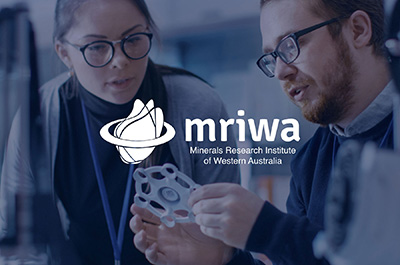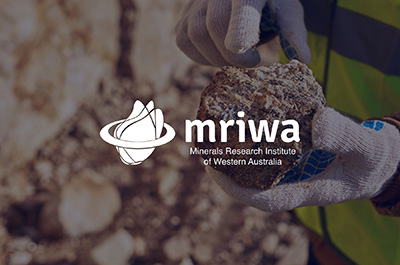Understanding fluid–rock interactions and lixiviant/oxidant behaviour for the in-situ recovery of metals from deep ore bodies
Project Overview
Project Number
Total Grant Value
Program Area
MRIWA Contribution
Project Theme
Project Period
The Challenge
Limited understanding of the performance of chemical recovery systems in real ore bodies has held back development of practical in-situ recovery (ISR) technology in mining.
Key Findings
Sulfate and salt solutions reacting with copper ores produce mineral precipitates which prevent the reactive fluids reaching the surface of the copper minerals, slowing reactions.
This behaviour prevents accurate prediction of ISR performance in real ore systems, where porosity of rocks and ability of chemical reactants to interact with the ore are critical.
The greatest recovery efficiency obtained in this study was delivered by a solution of ferric chloride and hydrochloric acid.
Benefit to WA
Western Australia is the world’s sixth-largest copper producer, with recent major discoveries and a wealth of exploration prospects adding to the future potential significance of this metal for the state.
By supporting practical and environmentally sensitive development of ISR technology, the findings of this research could prolong the operation of many existing copper mines in Western Australia or help convert currently sub-economic systems into commercial prospects, all while reducing the impact of mining on the landscape.
Keywords: in-situ recovery; fluid–rock interactions; deep ore bodies; chalcopyrite; bornite; reaction kinetics
Publications arising from the research
Hidalgo, T. 2020. Understanding fluid–rock interactions and lixiviant/oxidant behaviour for the in-situ recovery of metals from deep ore bodies. (Doctoral dissertation, Curtin University, Perth). https://espace.curtin.edu.au/handle/20.500.11937/81528 ![]()
Hidalgo, T., Kuhar, L., Beinlich, A., Putnis, A. 2020. Effect of multistage solution–mineral contact in in-situ recovery for low-grade natural copper samples: Extraction, acid consumption, gangue-mineral changes and precipitation, Minerals Engineering. 159, 106616. https://doi.org/10.1016/j.mineng.2020.106616 ![]()
Hidalgo, T., Verrall, M., Beinlich, A., Kuhar, L., Putnis, A. 2020. Replacement reactions of copper sulphides at moderate temperature in acidic solutions. Ore Geology Reviews. 123:103569.
https://doi.org/10.1016/j.oregeorev.2020.103569 ![]()
Hidalgo, T., Kuhar, L., Beinlich, A., Putnis, A. 2019. Kinetics and mineralogical analysis of copper dissolution from a bornite/chalcopyrite composite sample in ferric-chloride and methanesulfonic-acid solutions. Hydrometallurgy. 188:140-156. https://doi.org/10.1016/j.hydromet.2019.06.009 ![]()
Hidalgo, T., Kuhar, L., Beinlich, A., Putnis, A. 2018. Kinetic study of chalcopyrite dissolution with iron(III) chloride in methanesulfonic acid. Minerals Engineering. 125:66-74. https://doi.org/10.1016/j.mineng.2018.05.025 ![]()
![]() Article is open access
Article is open access
![]() Access requires journal subscription or purchase of article from journal publisher
Access requires journal subscription or purchase of article from journal publisher
Similar Projects
Page was last reviewed 4 May 2022


